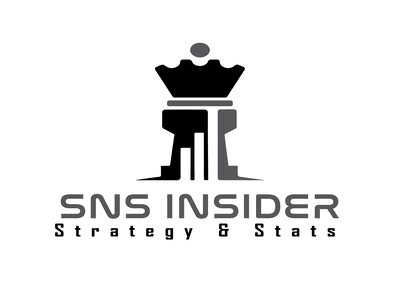Introduction:
The Smart and Connected Office Market is at the forefront of workplace transformation, leveraging technology to create intelligent, efficient, and collaborative work environments. This article delves into the scope, segmentation, and recent developments within this market, while also examining potential influences from economic recessions and geopolitical events like the Russia-Ukraine war.
Market Scope & Overview:
The Smart and Connected Office Market encompasses a diverse array of technologies and solutions aimed at enhancing workplace productivity, efficiency, and employee well-being. From IoT-enabled devices and intelligent building systems to advanced communication and collaboration tools, the market is shaping the future of work by integrating digital technologies seamlessly into the office environment. The scope of the market extends across various industries, including IT, finance, healthcare, and more.
Market Segmentation:
Key segments within the Smart and Connected Office Market include:
Smart Building Solutions: Integration of IoT devices for lighting, HVAC control, and energy management.
Communication and Collaboration Tools: Video conferencing, unified communication platforms, and virtual collaboration spaces.
Workspace Management Systems: Utilization tracking, space optimization, and employee experience platforms.
Security and Access Control: Biometric authentication, smart card systems, and surveillance solutions.
This segmentation reflects the multifaceted nature of the market, offering solutions that cater to diverse needs within the modern workplace.
Impact of Recession:
Economic recessions can influence corporate spending, and the Smart and Connected Office Market is not immune to these effects. However, the resilience of the market lies in its ability to address cost-saving measures and operational efficiency. During recessions, organizations may prioritize technologies that improve remote work capabilities, reduce energy consumption, and optimize office space utilization, driving the adoption of smart office solutions.
Impact of Russia-Ukraine War:
Geopolitical events, such as the Russia-Ukraine war, can impact global supply chains and influence the Smart and Connected Office Market. Disruptions in the manufacturing and supply of components, particularly electronics, may affect product availability and pricing. Additionally, uncertainties in international trade may prompt organizations to reevaluate their technology procurement strategies, potentially influencing the pace of adoption of smart office solutions.
Key Regional Developments:
Regional dynamics play a significant role in shaping the Smart and Connected Office Market:
North America's Technological Prowess: The North American region, particularly the United States, leads in technological innovation and adoption. The smart office trend is well-established, driven by a robust IT sector and a focus on enhancing workplace efficiency.
European Emphasis on Sustainability: Europe emphasizes sustainability and green building practices, influencing the adoption of smart building solutions. Countries like Germany and the United Kingdom are at the forefront of integrating smart technologies into office spaces.
Asia-Pacific's Rapid Adoption: The Asia-Pacific region, including China, Japan, and India, is witnessing rapid adoption of smart office solutions. Growing economies, urbanization, and a tech-savvy workforce contribute to the expansion of the market in this region.
Recent Developments:
The Smart and Connected Office Market is characterized by ongoing innovations that shape the modern workplace:
IoT Integration for Workplace Insights: The integration of IoT sensors provides valuable data for workplace analytics, enabling organizations to optimize space utilization and enhance employee experience.
AI-Powered Collaboration Tools: Advanced artificial intelligence algorithms are enhancing collaboration tools, providing features such as real-time language translation, automated meeting summaries, and intelligent scheduling.
Focus on Employee Well-Being: Smart office solutions now prioritize employee well-being, incorporating features like lighting that adjusts to circadian rhythms, air quality monitoring, and ergonomic workspace designs.
Hybrid Work Solutions: The rise of hybrid work models has led to the development of solutions that seamlessly integrate in-office and remote work, fostering a flexible and collaborative work environment.
Conclusion:
The Smart and Connected Office Market is not just about technology; it's about reimagining the way we work. As the workplace continues to evolve, the market plays a pivotal role in shaping a connected, intelligent, and adaptable environment. From the integration of IoT devices to the development of AI-powered collaboration tools, the Smart and Connected Office Market is a dynamic force driving the future of work towards a more connected and efficient landscape.
Table of Content – Analysis of Key Points
Chapter 1. Executive Summary
Chapter 2. Global Market Definition and Scope
Chapter 3. Global Market Dynamics
Chapter 4. Global Smart and Connected Office Market Industry Analysis
Chapter 5. Smart and Connected Office Global Market, by Type
Chapter 6. Smart and Connected Office Global Market, by Application
Chapter 7. Smart and Connected Office Global Market, Regional Analysis
Chapter 8. Competitive Intelligence
Chapter 9. Key Companies Analysis
Chapter 10. Research Process
Continued…
Contact us:
Akash Anand
Head of Business Development & Strategy
info@snsinsider.com
Phone: +1-415-230-0044 (US) | +91-7798602273 (IND)


